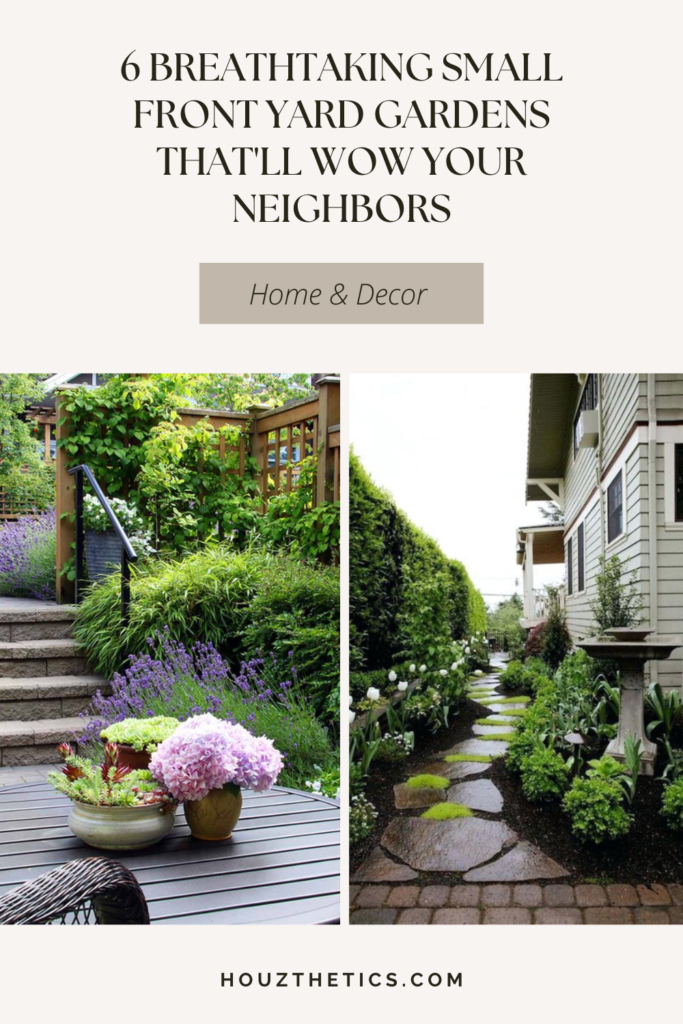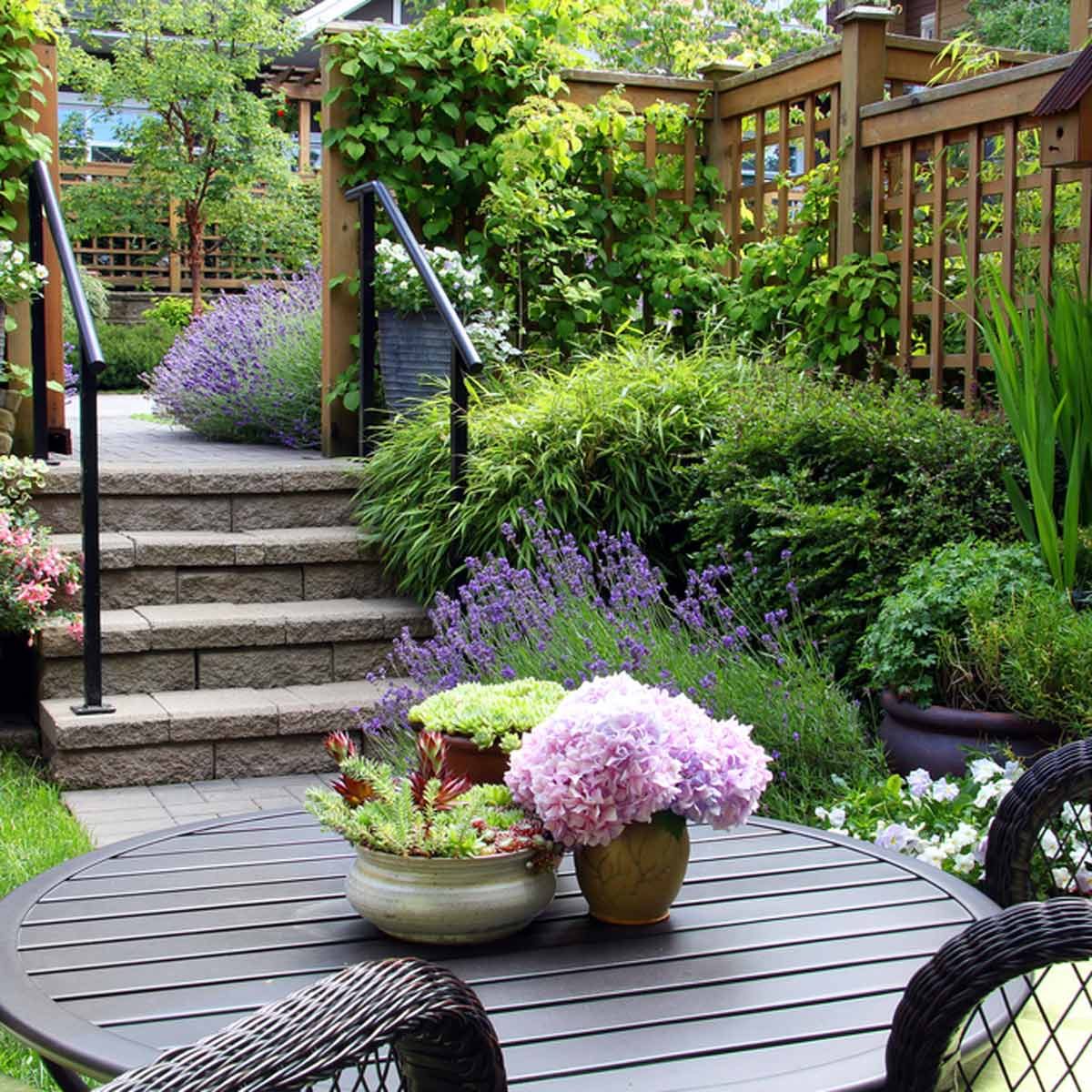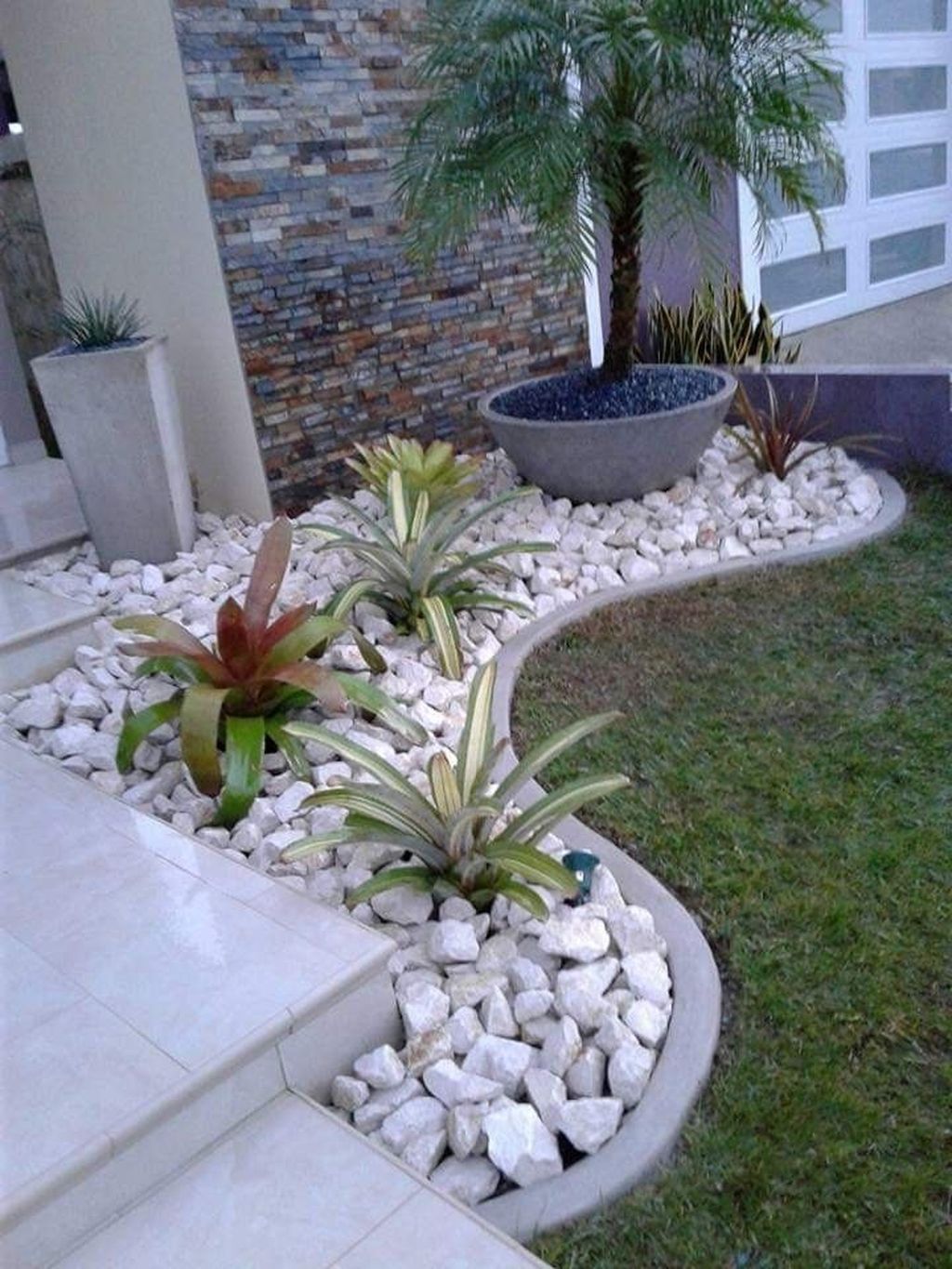
“Small front yard garden ideas” encompasses creative landscaping concepts tailored to compact front yards. These ideas transform limited spaces into visually appealing and functional outdoor havens. Whether aiming for vibrant flower gardens, lush greenery, or practical vegetable patches, there’s a wealth of design options to explore.
Small front yard gardens offer a myriad of benefits. They enhance curb appeal, creating a welcoming ambiance for visitors and passersby. These gardens promote environmental sustainability by reducing water runoff and providing habitats for beneficial insects. Additionally, they offer therapeutic benefits, providing a tranquil escape and opportunities for relaxation and gardening activities.
Small Front Yard Garden Ideas
Creating a beautiful and functional small front yard garden requires careful planning and consideration of various aspects. Here are six key elements to consider when designing your small front yard garden:
- Space planning: Maximize space with vertical gardening, raised beds, and compact plants.
- Sunlight: Choose plants that thrive in the amount of sunlight your yard receives.
- Focal point: Create a central point of interest, such as a small tree, statue, or water feature.
- Color scheme: Use a limited color palette to create a cohesive look.
- Texture and form: Combine plants with different textures and shapes to add visual interest.
- Edging: Define the garden’s edges with bricks, stones, or low hedges.
These elements come together to create a visually appealing and functional small front yard garden. For example, a raised bed garden can be used to grow vegetables, herbs, or flowers, while a vertical garden can be used to create a living wall or add privacy. By carefully considering these aspects, you can create a beautiful and inviting outdoor space that will be enjoyed by you and your visitors for years to come.

Space planning
Space planning is a crucial aspect of designing small front yard gardens, as it allows homeowners to make the most of limited space. Vertical gardening, raised beds, and compact plants are all effective techniques for maximizing space and creating a beautiful and functional outdoor area.
Vertical gardening involves growing plants vertically, either on walls or trellises. This technique is ideal for small spaces, as it allows homeowners to grow a variety of plants without taking up too much ground space. Raised beds are another great way to maximize space, as they allow homeowners to create additional growing space above the ground level. Raised beds also improve drainage and soil quality, which can benefit plants and help them thrive.
Compact plants are also a good choice for small front yard gardens, as they do not take up a lot of space and can be easily incorporated into any design. There are many different types of compact plants available, including dwarf shrubs, small trees, and perennials. By using a combination of vertical gardening, raised beds, and compact plants, homeowners can create a beautiful and functional small front yard garden that is tailored to their specific needs.

Sunlight
When planning a small front yard garden, it is essential to consider the amount of sunlight the area receives. Different plants have different sunlight requirements, and choosing plants that are well-suited to the amount of sunlight your yard receives will help ensure their success. For example, if your yard receives full sun for most of the day, you will want to choose plants that can tolerate these conditions, such as sunflowers, zinnias, and lavender. If your yard receives only partial sun or shade, you will need to choose plants that can tolerate these conditions, such as hostas, ferns, and impatiens.
In addition to the amount of sunlight, you will also need to consider the direction of the sunlight when planning your garden. The direction of the sunlight will affect the temperature and humidity levels in different parts of your yard, and this can also affect the types of plants that will thrive in those areas. For example, the south side of your yard will typically be warmer and sunnier than the north side, so you may want to plant heat-loving plants on the south side and shade-loving plants on the north side.
By considering the amount and direction of sunlight your yard receives, you can choose plants that will thrive in your specific conditions. This will help you create a beautiful and healthy garden that you can enjoy for years to come.

Focal point
Incorporating a focal point into a small front yard garden is a key design element that can enhance the visual appeal and create a sense of balance and harmony. A focal point serves as the central point of interest, drawing the eye and creating a sense of depth within the limited space. It can be a small tree, a statue, a water feature, or any other element that stands out from the surrounding plants and adds character to the garden.
The choice of focal point should complement the overall design style and theme of the garden. For example, a small Japanese maple tree can create a serene and elegant focal point in a Zen-inspired garden, while a whimsical statue can add a touch of playfulness to a cottage-style garden. Water features, such as a small fountain or birdbath, can introduce a soothing element and attract wildlife to the garden.
Placing the focal point carefully is crucial to maximize its impact. It should be positioned in a central location or at the end of a pathway, drawing attention and creating a visual hierarchy within the garden. The surrounding plants should complement the focal point, framing it and enhancing its visual appeal. By incorporating a focal point into the design, homeowners can create a small front yard garden that is both visually stunning and inviting.

Color scheme
In the realm of small front yard garden ideas, color plays a pivotal role in shaping the overall aesthetic and creating a cohesive design. Employing a limited color palette is a fundamental principle that can transform a small space into a visually stunning and harmonious outdoor haven.
A well-defined color scheme brings unity to the garden, preventing it from appearing cluttered and chaotic. When working with limited space, it is essential to avoid overwhelming the eye with a myriad of colors. Instead, selecting a few complementary hues and repeating them throughout the design creates a sense of balance and visual interest. This approach allows each color to stand out while contributing to the overall theme of the garden.
For instance, a monochromatic garden featuring shades of green, from vibrant chartreuse to deep emerald, exudes a sense of tranquility and serenity. Alternatively, a complementary color scheme, such as blue and orange or red and green, introduces a dynamic and eye-catching contrast. By carefully selecting and repeating colors in various elements, such as flowers, foliage, and hardscaping, homeowners can create a cohesive and visually appealing small front yard garden that is both inviting and aesthetically pleasing.

Texture and form
In the realm of “small front yard garden ideas,” texture and form play a pivotal role in creating captivating and dynamic outdoor spaces. By incorporating plants with varying textures and shapes, homeowners can add depth, dimension, and visual interest to their small gardens.
- Foliage Texture: Foliage texture refers to the surface quality of plant leaves. Combining plants with smooth, velvety, or spiky leaves creates a tactile and visually engaging experience. For instance, velvety lamb’s ear (Stachys byzantina) contrasts beautifully with the smooth leaves of hostas.
- Plant Shape: Plant shape encompasses the overall form and silhouette of a plant. Intermingling plants with upright, spreading, or weeping habits adds a dynamic element to the garden. A weeping Japanese maple (Acer palmatum) can soften the edges of a raised bed, while upright boxwoods (Buxus sempervirens) provide structure and definition.
- Contrast: Playing with contrast between different textures and shapes is key to creating a visually captivating garden. Juxtaposing smooth, rounded forms with sharp, angular ones adds drama and depth. For example, the soft, feathery texture of ornamental grasses complements the bold, spiky foliage of yucca plants.
- Focal Points: Plants with unique textures or shapes can serve as focal points within the garden. A specimen tree with an unusual leaf shape or a sculptural succulent can draw the eye and create a sense of intrigue. By carefully placing these focal points, homeowners can guide the viewer’s attention and create a cohesive design.
By embracing the principles of texture and form, homeowners can transform their small front yard gardens into captivating outdoor spaces that engage the senses and create a lasting impression.

Edging
Edging plays a crucial role in the design and functionality of small front yard gardens. By defining the garden’s edges with bricks, stones, or low hedges, homeowners can achieve several benefits that enhance the overall aesthetic and practicality of their outdoor space.
- Improved Aesthetics: Edging creates a clean and polished look, framing the garden and separating it from the surrounding areas. This definition enhances the visual appeal of the garden, making it a more cohesive and attractive focal point.
- Weed Control: Edging acts as a physical barrier, preventing weeds from encroaching on the garden beds. This reduces the need for constant weeding and helps maintain a tidy and well-maintained appearance.
- Soil Retention: Edging helps retain soil within the garden beds, preventing erosion and nutrient loss. This is particularly important in areas with sloping terrain or heavy rainfall.
- Water Management: Edging can be used to direct water flow and prevent runoff from washing away soil and nutrients. This aids in maintaining optimal soil moisture levels and supports healthy plant growth.
The choice of edging material depends on personal preference and the overall design style of the garden. Bricks and stones offer a classic and durable option, while low hedges add a touch of greenery and can provide additional privacy. By incorporating edging into their small front yard garden ideas, homeowners can create a visually appealing, functional, and sustainable outdoor space that enhances the curb appeal of their property.

FAQs about Small Front Yard Garden Ideas
This section addresses frequently asked questions and misconceptions about designing and maintaining small front yard gardens, providing informative answers to guide homeowners in creating beautiful and functional outdoor spaces.
Question 1: How do I maximize space in a small front yard garden?
Answer: Utilize vertical gardening techniques such as trellises and wall-mounted planters. Consider raised bed gardening for better drainage and extended growing seasons. Choose compact plant varieties, including dwarf shrubs, small trees, and perennials.
Question 2: What plants are best suited for small front yard gardens with limited sunlight?
Answer: Opt for shade-tolerant plants such as hostas, ferns, impatiens, and begonias. Consider incorporating variegated foliage to brighten up shady areas.
Question 3: How can I create a focal point in a small front yard garden?
Answer: Introduce a small tree, statue, or water feature as a central point of interest. Position the focal point strategically to draw attention and create depth.
Question 4: Is it possible to have a colorful small front yard garden without overwhelming the space?
Answer: Employ a limited color palette and repeat colors throughout the design to create a cohesive look. Use contrasting colors judiciously to add visual interest without creating clutter.
Question 5: How can I enhance the visual appeal of my small front yard garden using texture and form?
Answer: Combine plants with varying foliage textures, such as smooth, velvety, or spiky leaves. Intermix plants with different shapes, including upright, spreading, and weeping habits. Play with contrasts to create drama and visual engagement.
Question 6: What are the benefits of using edging in a small front yard garden?
Answer: Edging defines the garden’s edges, enhancing aesthetics and preventing weeds. It helps retain soil, preventing erosion and nutrient loss. Edging also aids in water management, directing water flow and minimizing runoff.
These FAQs provide valuable insights and practical guidance for homeowners seeking to create beautiful and functional small front yard gardens. By addressing common concerns and misconceptions, this section empowers individuals to design and maintain thriving outdoor spaces that enhance their property’s curb appeal and provide enjoyment for years to come.
Conclusion
In conclusion, designing a small front yard garden presents unique opportunities for creativity and functionality. By incorporating space-saving techniques, selecting appropriate plants, creating focal points, using color wisely, and defining edges with edging, homeowners can transform limited spaces into beautiful and inviting outdoor havens. These gardens not only enhance curb appeal but also provide environmental benefits and opportunities for relaxation and enjoyment.
As the world continues to embrace sustainable living and urban gardening, small front yard gardens will undoubtedly gain prominence. They offer a practical solution for those with limited outdoor space, providing a connection to nature and a sense of accomplishment in nurturing a thriving garden. By embracing the principles outlined in this article, homeowners can create small front yard gardens that are both visually stunning and functionally enriching.
